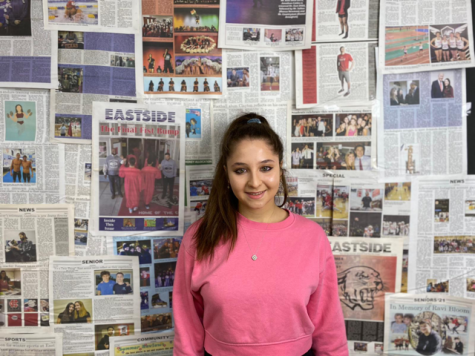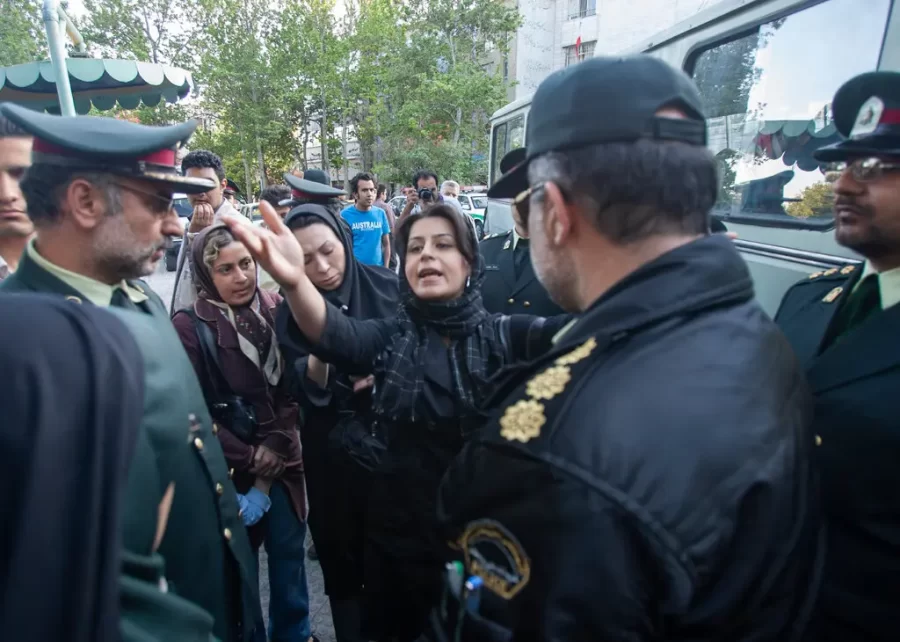‘Morality police’ violate human rights in Iran
Iran has long had a history of suppressing its population, sometimes through police units such as the morality police.
Twenty-two year old Iranian Mahsa Amini died while in custody of the “morality police” who beat her tirelessly for showing a little bit of hair through her hijab. This sparked total chaos in Iran as women began to protest against the brutality and oppression that women have faced for decades. The anti-regime protests that have been going on are the largest the country has witnessed in a very long time. According to Amnesty International, despite Iranian security forces cracking down heavily on protesters and killing at least 52 Iranian women, it does not keep the women from crying for peace, freedom, and civility. Iranians have been seen gathering in the streets and using scissors to cut off pieces of their hair as they abandon the hijab altogether. This is a message to the state that represents the poor young women who died for just a little hair.
One of Iran’s militias, Basij, has been involved in severe state repression as they reigned as a parliamentary force of government for four decades after the fall of the U.S.-backed Shah. They are meant to keep the “women in line.” As the momentum of the protests increased, Basij began invading schools where they would scare young girls and threaten them in order to bring order to an already furious country. 50 Shiraz school girls were seen chanting around and heckling the militia men on October 5th. The girls luckily rejected them as they took off their scarves and chased them away from the school.
Monday October 18th was the most intense day of the protests so far. Women and girls marched down the suburban streets of Tehran waving their scarves and yelling “Bisharaf” (without honor) and “death to the dictator” as they tore up photos of the Islamic Republic’s founder Ayatollah Ruhollah Khomeini. The outpouring anger and preemptive fighting for a future where their bodies are not controlled by a anti-feminist regime is truly exceptional. Despite the dangers, threats, and deaths that have happened in the past seven weeks, the state is still exploding with the protest movement. Iranians believe that wearing a hijab is a form of modesty that should be chosen, not enforced. The hijab is supposed to represent freedom to live and serve God, not to be forced upon women by beating and killing them in the streets. According to CNBC, as of November 14, Iran chillingly issued the first death sentencing for over 14,000 prisoners that were a part of the protests but the case will not be published until the final verdict.
The speed of the protests is partly due to economic disparity and decline in the living conditions of the middle and lower class people. The large gap between how the wealthy live and how the rest of the civilians must adhere to the extreme rules is partly why the protests broke out so powerfully. Now, the protests are not only for the loving memory of Mahsa Amini, but against a tyrant leader of the Islamic Republic that has caused ordinary Iranians to seek a better quality of life. “Women’s freedom is clearly at the center of the protests, but decades of repression, economic misery, government corruption and mismanagement — all amplified by sanctions — have helped create the circumstances that have led to the current situation,” said Trita Parsi, executive vice president of Quincy Institute.
This clearly ignites some concerns for how the people will continue to face the violent lashes of the regime.
This issue is not only causing crimes to humanity in Iran but also raising concerns across many social media platforms as influencers share heartbreaking videos of the protesters gathering and chanting in the streets. The UN has even made a public statement that they stand with the strong Iranian women who have died for democracy. At a recent UN meeting on November 2, the U.S. sought the removal of Iran from the UN’s Women’s Rights Agency. Iran’s 45-member section would be under investigation and would be removed from the movement altogether.
Despite Iranian officials denying the uprising and saying that the U.S. is spreading misinformation, the videos are enough proof to show the world the struggles of the Iranian women. According to the New York Times, Rights Groups reported that 250 children and teens have died in the past few weeks. In the end, human rights are not an issue of the past. The world still faces disparity and has condemned violence against women and their bodies.

Batul Elbarouki is a Senior and one of Eastside's Global Commentary Editors for the 2022-2023 school year. You can often find her with friends or doing...

